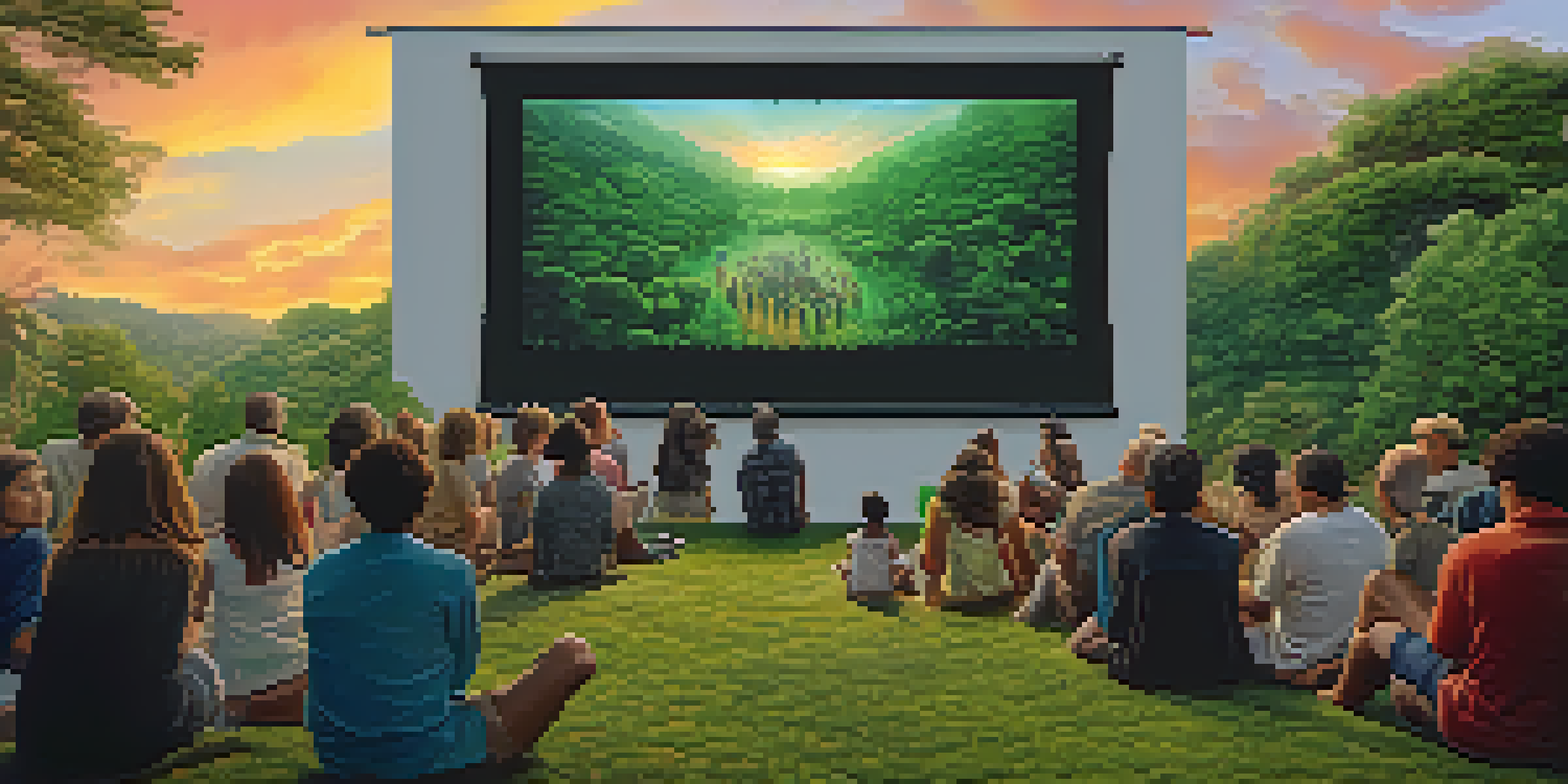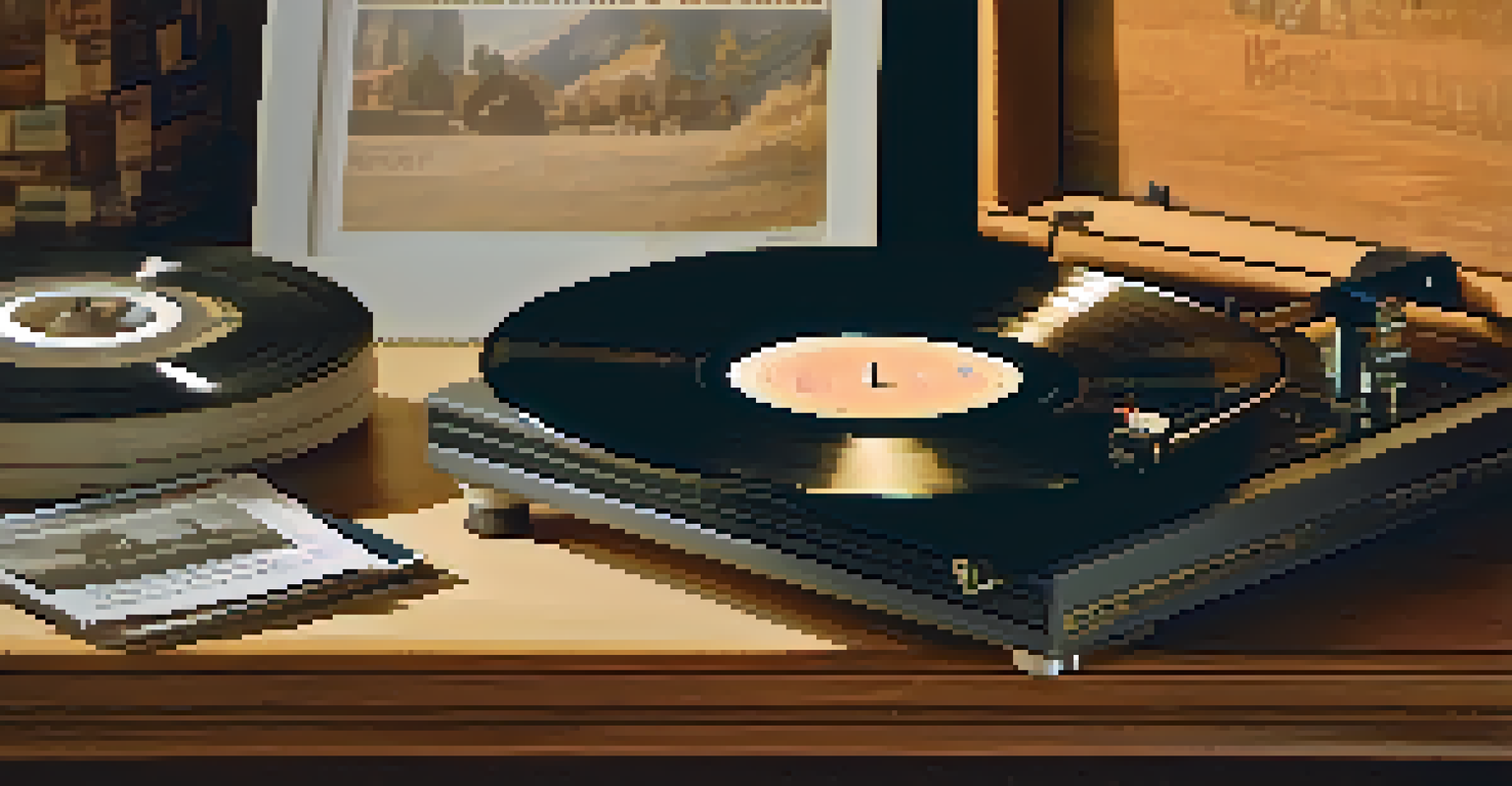The Role of Art in Historical Documentaries for Change

Understanding the Intersection of Art and History
Art and history have long been intertwined, with each influencing the other. Historical documentaries aim to present facts, but they often rely on artistic elements to engage viewers. By incorporating visuals, music, and storytelling techniques, these documentaries can evoke emotions that resonate with audiences on a deeper level. This emotional connection helps viewers relate to historical events, making them more memorable and impactful.
Art is a way of recognizing ourselves in others, and it is a way to connect with history and humanity.
For instance, consider how a well-crafted documentary might use dramatic reenactments or evocative music to enhance the narrative. These artistic choices can transform a dry recounting of facts into a compelling story that encourages viewers to reflect on the past. Just as a painting can convey complex emotions, so too can the art within a documentary shape our understanding of historical events.
Ultimately, art serves as a bridge between the past and present, helping to contextualize history in a way that feels relevant today. By examining this interplay, we can appreciate how creative expressions contribute to our understanding of historical narratives.
The Power of Visual Storytelling in Documentaries
Visual storytelling is a powerful tool in historical documentaries, allowing filmmakers to paint vivid pictures of the past. Through the use of imagery, filmmakers can convey emotions and experiences that words alone may struggle to express. For instance, archival footage paired with contemporary interviews can create a rich tapestry that brings history to life.

Consider the documentary '13th,' which explores the history of racial inequality in the U.S. The filmmakers utilize a mix of historical footage, art, and infographics to illustrate complex ideas about systemic racism. This combination not only informs viewers but also invites them to engage with the content critically.
Art Enhances Historical Understanding
Artistic elements in documentaries create emotional connections that deepen viewers' understanding of historical events.
By leveraging visual elements, documentaries can challenge viewers to rethink their perspectives on history. This approach not only educates but also inspires change, as it encourages audiences to connect with the subjects on a personal level.
Art as a Tool for Empathy in Historical Narratives
One of the most significant roles of art in historical documentaries is its ability to foster empathy. Artistic representations of historical events can humanize individuals and groups often reduced to statistics or abstract concepts. For example, a documentary that portrays the personal stories of refugees can highlight their struggles and resilience, allowing viewers to see the human side of complex issues.
The role of the artist is to make the world a better place by creating beauty and challenging norms.
By presenting history through the lens of personal experiences, documentaries can bridge cultural gaps and promote understanding. When viewers identify with the emotions and experiences depicted, they are more likely to engage with the subject matter on a personal level. This emotional connection can inspire action and advocacy for change.
Ultimately, the use of art in these narratives serves to remind us of our shared humanity, encouraging compassion and activism in the face of historical injustices.
Using Art to Challenge Historical Narratives
Art has the unique ability to challenge and reinterpret historical narratives, prompting viewers to question dominant perspectives. Documentaries that include artistic expressions, such as animation or reenactments, can offer alternative viewpoints that may have been overlooked or marginalized. This approach encourages audiences to reconsider accepted historical accounts and opens up space for dialogue.
For instance, when a documentary features artistic interpretations of indigenous history, it can highlight voices that have been historically silenced. This not only enriches the narrative but also fosters a more inclusive understanding of history. By presenting multiple perspectives, filmmakers can create a more nuanced portrayal of events.
Visual Storytelling Sparks Engagement
The use of visual storytelling in documentaries captivates audiences, prompting them to engage critically with history.
In this way, art becomes a catalyst for critical thinking, allowing viewers to reflect on the complexities of history and its ongoing implications in today's world.
The Role of Music in Shaping Historical Documentaries
Music plays a pivotal role in shaping the emotional landscape of historical documentaries. It can underscore key moments, set the tone, and even evoke specific feelings that align with the narrative. For example, a somber score can enhance the gravity of a documentary about war, while a hopeful melody can uplift a story of resilience and recovery.
The strategic use of music not only enhances the viewer's experience but also reinforces the documentary's message. A powerful soundtrack can linger in the minds of viewers long after the credits roll, prompting reflection on the themes presented. This auditory element adds another layer to the storytelling, making the historical context more accessible.
By integrating music thoughtfully, filmmakers can create a more immersive experience that resonates emotionally with audiences, further driving home the significance of the historical events discussed.
Artistic Collaboration in Documentary Filmmaking
Collaboration between artists and historians can lead to innovative documentary approaches that engage viewers in unique ways. When filmmakers work alongside artists, they can incorporate diverse mediums that enrich the storytelling experience. For example, a documentary might blend traditional filmmaking techniques with graphic design or performance art, creating a multi-dimensional narrative.
This collaboration not only brings fresh perspectives to historical events but also showcases the power of interdisciplinary approaches in storytelling. By merging different forms of art, filmmakers can reach a wider audience, appealing to both art lovers and history enthusiasts alike.
Art Drives Empathy and Activism
Art in historical narratives fosters empathy and inspires viewers to take action on social issues.
Such partnerships highlight the importance of creativity in documentary filmmaking, proving that art is not merely an accessory but a core component that elevates the narrative and enhances its impact.
The Impact of Art on Viewer Engagement and Activism
Artistic elements in historical documentaries can significantly boost viewer engagement and inspire activism. When audiences are emotionally moved by a documentary, they are more likely to take action, whether through raising awareness or participating in social movements. The combination of compelling visuals, music, and storytelling can ignite passion and motivate viewers to engage with the issues presented.
Take, for instance, documentaries that address climate change. When these films use artistic visuals to depict the beauty of nature alongside the stark realities of environmental degradation, they can inspire viewers to advocate for change. The art serves as a call to action, prompting individuals to reflect on their role in shaping the future.

In this way, art transcends the bounds of the screen, becoming a powerful tool for social change that encourages individuals to not only learn about history but also to become active participants in creating a better world.